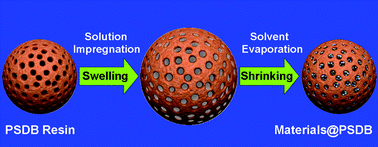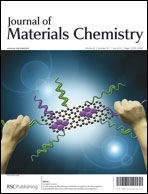A novel strategy of adopting the reversible swelling effect of a promising scaffold—hypercrosslinked porous poly(styrene-co-divinylbenzene) resin (PSDB) to nanoconfine hydrogen storage materials is reported, in which nanoconfined ammonia–borane (AB) is endowed with high loading ratio and significantly improved hydrogen storage capabilities. To verify the importance of swelling behavior displayed by this polymeric scaffold in dehydrogenation, an ammonia-dissolving route (PSDB–AB (NH3)) that does not involve swelling, was performed to enable direct comparison with the methanol-dissolving route (PSDB–AB (CH3OH)). Moreover, solid-state 11B NMR measurements were employed to illustrate the different reaction mechanisms in these two PSDB-confined AB samples, where decomposition involving both the diammoniate of diborane (DADB) and linear dimer are observed for PSDB–AB (NH3) but only the latter route is seen for PSDB–AB (CH3OH), deeply demonstrating the difference of dehydrogenation properties in these two samples. Our findings establish a prospective approach via utilizing this class of polymers for promoting the design and construction of advanced energy materials with high performances.

You have access to this article
 Please wait while we load your content...
Something went wrong. Try again?
Please wait while we load your content...
Something went wrong. Try again?


 Please wait while we load your content...
Please wait while we load your content...